Water and Waste Water Testing
Water is an inorganic compound with the chemical formula H2O. It is a transparent, tasteless, odorless, and nearly colorless chemical substance. It is the main constituent of Earth’s hydrosphere and the fluids of all known living organisms. It exists in gaseous, liquid, and solid states and it freezing at 32°F or 0°C and boiling at 212°F or 100°C, that in a more or less impure state constitutes rain, oceans, lakes, rivers, etc. which makes it invaluable for human uses and as plant and animal habitat. Since water is readily changed to a vapour (gas), it can travel through the atmosphere from the oceans inland, where it condenses and nourishes life.
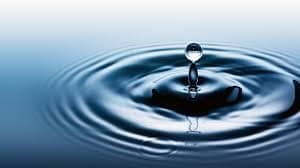
There are different types of water based on their chemical, physical and biological characteristics. The main types of water are:
1 . Potable Water
Potable water or drinking water is water fit for human consumption, which has undergone appropriate treatment and can be consumed without any risks. It is clean, transparent, has no unpleasant odour or taste and is free of any contaminants.

2 . Fresh Water
Fresh water is found naturally on the Earth’s surface as ice, as water in wetlands, ponds, lakes, rivers and streams, and as groundwater in aquifers. It usually has a low concentration of dissolved salts and solids.
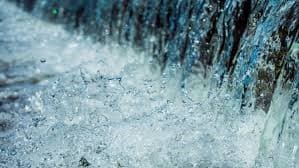
3 . Salt Water
It is also called seawater, found in the Earth’s oceans and seas. It has a concentration of dissolved salts of about 3.5%.
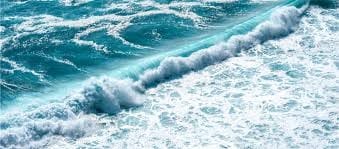
4 . Brackish Water
The salinity of brackish water is somewhere between that of fresh water and seawater. The salinity of brackish water is not accurately defined; it can range between 0.5 to 30 grams of salt per litre.
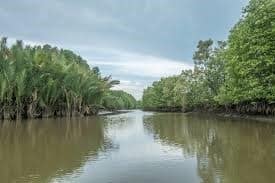
5 . Hard Water
Hard water has a high mineral content, particularly magnesium and calcium salts. It is also known as calcareous water

6 . Soft Water
Soft water contains very small amounts of dissolved salts. It may be defined as water with less than 50 mg per litre of calcium carbonate.
7 . Distilled Water
Distilled water is composed of H2O molecules, having been purified or cleaned through distillation.
8 . Waste Water
Wastewater is any type of water whose quality has been negatively affected by human activity. According to the FAO, the water has no immediate value for the purpose it was used or produced because of its quality, quantity, or the moment at which it is available.
9 . Black Water
Within the different kinds of used water, black waters are those that have been polluted with faeces or urine .
10 . Grey Water
Grey water is domestic wastewater. It has less nitrogen and phosphorous than black water, and contains organic and inorganic material, and microorganisms. Grey water owes its name to its murky appearance and because it is somewhere between potable freshwater and wastewater.
11 . Raw Water
Raw water is water that has not undergone any treatment. It is found in natural sources and reserves, in surface and groundwater bodies.
Drinking Water Testing
Drinking Water and fresh air are the unavoidable reasons for life. More than 70% of human body is composed by water. But unfortunately, only 3% of water available across the globe is fresh water and only half of that is available to humans. In developing countries population growth combined with industrial development is hard pressing on water demand resulting in the shrinkage of water table.
The shrinkage water table, bad industrial waste management practices, improper sanitation are mostly responsible for the deteriorating drinking water quality. The most essential requirement to ensure good quality drinking availability to all is regular drinking water testing.
Our Ajman laboratory also supports clients across the region through our ISO-certified water testing services in Qatar, ensuring accurate and regulation-compliant analysis.
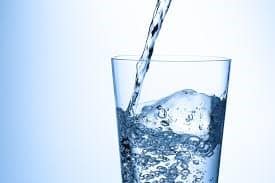
Non-Potable Water Testing
Non-potable water is water that is not of drinking quality, but may still be used for many other purposes, depending on its quality. Potable water is water of a quality suitable for drinking, cooking and personal bathing. The standards that define potable water are described in the Australian Drinking Water Guidelines. Unless water is known to be of potable quality it should be regarded as non-potable and used appropriately.

Waste Water Testing
While doing waste water testing, treatment of wastewater by a physical and/or chemical process involving settlement of suspended solids, or other process in which the Biological Oxygen Demand (BOD) of the incoming wastewater is reduced by at least 20% before discharge, and the total suspended solids content is reduced by at least 50%.

Sea Water Testing
Sea Water Analysis Services include sampling of the seawater column, sediment recovery and detailed analysis of water, sediment and fish tissue for trace heavy metals and organics for various chemicals and metals.
There are three main water quality parameters to measure the quality of water: physical, chemical, and biological. Physical water quality parameters include eight principle indicators: electrical conductivity, salinity, total dissolved solids, turbidity, temperature, color, and taste and odor. Chemical water parameters include pH, acidity, alkalinity, hardness, chlorine, and dissolved oxygen. The final water quality is biological, which includes bacteria, algae, nutrients, and viruses.

Physical Parameters
Physical water quality parameters are observed as a result of physical changes in the water.
o Electrical Conductivity (EC)
Conductivity is a core physical water parameter. Electrical conductivity (EC) refers to the ability of water to conduct an electrical current in water over a certain distance, usually measured in Siemens (S) per distance. The power for water to conduct electricity comes from the concentration of ions within the water. Electrical conductivity is essential to measure when assessing the quality of water because it can detect the level of contaminated water. Water that has a high EC has a greater amount of contaminants, whereas water that has good water quality such as drinking water has fewer contaminants, and therefore cannot conduct electricity.
o Salinity
Salinity refers to the salt content in water. As dissolved ions increase conductivity along with salinity, the two water parameters are measured together. The main salt ion in water that increases salinity is sodium chloride. However, other salt ions such as sodium, carbonate, chloride, and sulfate can also increase the salinity in water. Salinity is measured in percentage (%) or parts per thousand (ppt). The best way to measure the salinity of the water is with a conductivity meter, refractometer, or hydrometer.
o Total Dissolved Solids
Total dissolved solids (TDS) enter the water from sewage, agricultural runoff, industrial wastewater, or the use of water treatment chemicals. The more TDS that are suspended or in suspension in water, the higher the water’s conductivity. TDS meter is the easiest way to measure TDS levels in the water.
o Turbidity
Turbidity refers to the haziness of water. High turbid conditions are caused by suspended solids or tiny particles; when the concentration of total suspended solids (TSS) and TDS in the water increase, the turbidity also increases.
o Temperature
Temperature measures the kinetic energy of molecules in the water, measured in degrees Fahrenheit or Celsius. Temperature is one of the most essential parameters of water quality, as it influences biological activity and growth in water, plus it has a direct effect on the water chemistry, influencing the other main water quality parameters. A temperature sensor is the easiest way to monitor the temperature.
Temperature sensors (Thermometer) are devices used in our everyday lives to measure the temperature in a wide range of industries and applications.
Temperature sensors provide readable measurements from electrical signals inside the temperature sensor. When a temperature change is detected, an electrical voltage or resistance is generated across the diode terminals inside the temperature probe.
o Color
The colours of water indicates the presence of a range of chemical and organic pollutants such as copper from plumbing systems, rust from iron pipes, algae, bacteria, and so on. Water that is used in the home should appear colorless. If tap water is blue or green, it is an indication of foreign substances such as microscopic organisms and particles. Decaying organic matter can also change the color of water, and this is commonly seen in stagnant pools of water like swamps.
Testing the color of the water is easy, as it can be done with the naked eye. All that is needed is a series of slides or tubes to compare a water sample. There are many color card tests available for both home use and industrial applications. For high-accuracy color measurements, a tintometer (a type of color sensor) is used.
o Taste & Odor
The last physical water quality parameters are taste and odor. They go hand in hand, as usually when the taste of water changes, an odor is produced. This is typically from a foreign substance in the water. These are usually organic materials and inorganic compounds.
Chemical Parameters
Chemical water quality parameters assess the chemical characteristics of the water.
o PH Testing
Measures the acidity and alkalinity of water. One of the most important chemical water quality parameters is pH, and it should always be the first measurement when assessing the quality of water.
Elevated pH levels can lead to bitter-tasting water. High pH also causes water pipes, and other industrial appliances to become encrusted with deposits, corroding materials, and therefore, increasing toxicity levels in the water. Most aquatic organisms are only able to survive within a pH range of 6 to 8. There are many ways to measure the pH of water. The simplest way is with a pH paper test kit. However, we always recommend a pH sensor with a pH probe for high accuracy and reliable results. A pH sensor is also the quickest way to see if water is acidic or alkaline.
o Acidity
Acidity measures the level of acid in the water, measured by a pH probe/sensor. Acidic water is caused by dissolved inorganic acids, carbon dioxide, and hydrolytic salts. Acidic water can affect biological activity in water and increase corrosion from chemical reactions.
o Alkalinity
Acidity indicates how well water can neutralize acids, measured using a pH sensor. Alkalinity is important for measuring water quality, as it determines how much soda ash is need to be added to neutralize the water. Water becomes alkaline when bicarbonate, hydroxide, and carbonate ions dissolve in water. Water that has a very high alkalinity level indicates contamination.
o Water Hardness
Water hardness refers to the mineral content of water. If water is considered hard, calcium or magnesium are likely the cause. Naturally, groundwater has a greater water hardness than surface water because groundwater is more exposed to minerals and ions. Hard water is formed when water percolates through deposits of limestone, chalk or gypsum which are largely made up of calcium and magnesium carbonates, bicarbonates and sulfates. Hard drinking water may have moderate health benefits, but can pose critical problems in industrial settings, where water hardness is monitored to avoid costly breakdowns in boilers, cooling towers, and other equipment that handles water. In domestic settings, hard water is often indicated by a lack of foam formation when soap is agitated in water, and by the formation of limescale in kettles and water heaters. Wherever water hardness is a concern, water softening is commonly used to reduce hard water’s adverse effects.
If hard water is left untreated, it can scale pipe systems and make it difficult to bathe. Water hardness may be due to the presence of following elements.
o Iron
Water containing ferrous iron is clear and colorless because the iron is completely dissolved. When exposed to air in the pressure tank or atmosphere, the water turns cloudy and a reddish-brown substance begins to form. This sediment is the oxidized or ferric form of iron that will not dissolve in water.
o Fluoride
Fluorine is a common element that does not occur in the elemental state in nature because of its high reactivity. It accounts for about 0.3 g/kg of the Earth’s crust and exists in the form of fluorides in a number of minerals, of which fluorspar, cryolite and fluorapatite are the most common. The oxidation state of the fluoride ion is -1. Fluoride is usually determined by means of an ion-selective electrode, which makes it possible to measure the total amount of free and complex-bound fluoride dissolved in water. The method can be used for water containing at least 20 µg/litre (Slooff et al.,1988). For rainwater in which fluoride was present at a concentration of 10 µg/litre, a detection limit of 1 µg/litre was reported (Barnard & Nordstrom, 1982).
o Phenols
Phenol is an organic compound appreciably soluble in water, with about 84.2 g dissolving in 1000 mL (0.895 M). Homogeneous mixtures of phenol and water at phenol to water mass ratios of 2.6 and higher are possible. The sodium salt of phenol, sodium phenoxide, is far more water-soluble.
o Cynaide
Some cyanide in water will be transformed into less harmful chemicals by microorganisms or will form a complex with metals, such as iron. The half-life of cyanide in water is not known. Cyanide in water does not build up in the bodies of fish. Cyanides are fairly mobile in soil.
o Heavy Metal
Metals are introduced in aquatic systems as a result of the weathering of soils and rocks, from volcanic eruptions, and from a variety of human activities involving the mining, processing, or use of metals and/or substances that contain metal pollutants. The most common heavy metal pollutants are arsenic, cadmium, chromium, copper, nickel, lead and mercury. There are different types of sources of pollutants: point sources (localized pollution), where pollutants come from single, identifiable sources. The second type of pollutant sources are nonpoint sources, where pollutants come from dispersed (and often difficult to identify) sources. There are only a few examples of localized metal pollution, like the natural weathering of ore bodies and the little metal particles coming from coal-burning power plants via smokestacks in air, water and soils around the factory.
o Metals:-
Testing that indicates the presence of a suite of metals which are not naturally occurring in water. Heavy metals (Aluminium, Antimony, Arsenic, Beryllium, Bismuth, Copper, Cadmium, Lead, Mercury, Nickel, Uranium, Tin, Vanadium and Zinc) can find their way into water bodies through natural processes or human activities such as mining, processing of minerals, use of metals as containers and transportation through metallic pipelines. Heavy metals are known to harm kidneys, liver, nervous system and bone structure.
Lead poisoning in humans can cause problems in synthesis of haemoglobin, kidneys, gastrointestinal tract, joints and reproductive systems and acute or chronic damage to the nervous system. Lead can also cause osteoporosis and weaken bones because it starts replacing Calcium in the bones.
Long-term exposure of cadmium leads to renal dysfunction. High exposure can least to lung cancer and osteodystrophy. Nickel has numerous reported mechanisms of toxicity including redox – cycling and inhibition of DNA repair as well as exhibiting allergic effects.
Exposure to mercury can lead to tremors, gingivitis and other psychological changes with spontaneous absorption and congenital malformation. Mono methyl mercury causes damage to the brain and the central nervous system, congenital malformations and development changes in young children. Vanadium has toxic effects on the liver, kidney, nervous and cardiovascular systems and blood forming organs.
- Calcium
- Magnesium
- Manganese
- Selenium
- Arsenic
- Lead
- Nitrate
- Mercury
- Cadmium
A colorimeter or hardness test strips measure water hardness.
o Dissolved Oxygen
Dissolved oxygen (DO) refers to the amount of oxygen dissolved in water. Dissolved oxygen gets into water from direct atmospheric absorption, a byproduct of plant photosynthesis, and from groundwater discharge.
Dissolved oxygen is one of the most significant indicators of water quality in water treatment systems and aquariums, and therefore, it is a crucial water quality parameter to monitor because it determines if water is polluted. If oxygen levels dramatically drop in aquatic environments, aquatic organisms cannot survive.
Dissolved oxygen is measured using an electrochemical DO meter and probe or the Winkler method.
Biological Parameters
Biological water quality parameters look at the characteristics to describe the presence or absence of waterborne pathogens and other microbial organisms. That include following microbes;
- Bacteria
Bacterial content tells us a lot about water quality. Bacteria are small, single-celled organisms that can rapidly reproduce if the pH level and temperature of the water allow. Unfortunately, as bacteria multiply at such a rapid rate, they are almost impossible to measure. Yet, what we do know, is that bacteria reproduce at a much slower pace in colder environments and areas that lack nutrients.
Example: Coliform, Streptococci (Faecal), Enterococci Escherichia coli, Salmonella, Listeria, Pseudomonas aeruginosa, Campylobacter and Clostridium perfringens.

- Algae
Algae are microscopic aquatic plants containing chlorophyll (photosynthetic pigments). They feed off inorganic material, converting it into organic material via photosynthesis. Algae can indicate poor water quality, and many algal indicators are used in water systems to assess environmental conditions. Algal blooms are indicators of bad odors and poor taste in water.

- Viruses
Viruses are a prime cause of human waterborne and water-related diseases. Testing for viruses in the water tells us a lot about the quality of water, and if the water needs treatment before use. Testing for viruses requires powerful electron microscopes or PCR testing methods. PCR methods are preferred because they can rapidly detect all the virus groups that cause waterborne diseases. Despite the difficulty in testing and treating viruses in water, they are usually removed during water purification and disinfection processes.

Other tests include:
Chloride Test
Chloride is usually present in fresh and salt water. However, its levels can be exacerbated as a result of minerals dissolving and industrial pollution.
Total Suspended Solids
Total Suspended Solids (TSS) is a measurement of the total solids in a water or wastewater sample that are retained by filtration. TSS is an important water quality parameter measure for wastewater treatment operations and environmental health. Wastewater contains large quantities of suspended organic and inorganic material that must be removed through screening, filtration or settling/flotation methods prior to environmental discharge. TSS will also have adverse effects on UV disinfection blocking/scattering UV light bound for pathogen disinfection or alternatively requiring higher intensity for proper disinfection, increasing energy costs.
Test for Pesticides
The extensive use of pesticides harms the soil, air, food surface and ground waters and quality causing serious impacts on the environment and on human health. In natural waters pesticide residues are present at very low levels and can be degraded when submitted to lower pH levels or exposed to solar radiation. The presence of organic contaminants in the environment are a result of pollution from various anthropogenic activities. while doing pesticides testing, Pesticides generated by the intensification of agriculture, are regarded as some of the most dangerous contaminants of the environment, despite their numerous merits. Not only are they toxic, they are also mobile and capable of bioaccumulation Pesticides in environmental samples are analysed by high resolution gas chromatography/high resolution mass spectrometry (HRGC/HRMS) using isotope dilution and internal standard quantitation techniques.
Volatile Organic Compounds
Volatile Organic Compounds or VOCs are a class or group of organic chemicals that contain carbon and tell to volatilize or evaporate into the atmosphere, such as: benzene, toluene, etc. Volatile organic compounds can have a variety of harmful health effects. The risk to human health is a function of the exposure route, level of exposure, and length of the exposure. In general, exposure to low levels of certain VOCs over long periods of time may lead to impaired immune system function, may damage the liver or increase the risk of cancer. At high levels of exposure, many VOCs can cause central nervous system depression (drowsiness, stupor). For short-term exposure, it is possible that the organics can irritate the skin or to the mucous membranes if inhaled.
Chemical Oxygen Demand
The chemical oxygen demand (COD) is a measure of water and wastewater quality. The COD test is often used to monitor drinking water testing plant efficiency. This test is based on the fact that a strong oxidizing agent, under acidic conditions, can fully oxidize almost any organic compound to carbon dioxide. The COD is the amount of oxygen consumed to chemically oxidize organic water contaminants to inorganic end products.
Nitrate and Phosphate Test
The presence of these essential nutrients is a good indicator of strong plant life. However, the addition of artificial nitrates and phosphates through detergents, fertilizers or sewage can be harmful and result in eutrophication, generally in the form of unwanted algal blooms.
Test for Pesticides
We measure whether any pesticides are present and their concentration levels.
Redox Reactions
The measurement of the reduction-oxidization potential of a solution, which indicates the electron activity. Micro-organism growth is highly dependent on these levels.
Total Petroleum Hydrocarbons(TPH)
Petroleum products occur as complex mixtures of chemicals, primarily hydrocarbons. Hydrocarbons are organic compounds composed of carbon and hydrogen atoms arranged in varying structural configurations.
Most petroleum hydrocarbon mixtures contain very low concentrations of PAHs. A number of these are considered above under the appropriate carbon fractions. The major concern regarding PAHs is the potential carcinogenicity of some molecules. Benzo(a)pyrene and benz(a)anthracene are classified as probable human carcinogens.
Poly Chlorinated Biphenyls(PCBs)
PCBs are a group of man-made organic chemicals consisting of carbon, hydrogen and chlorine atoms. The number of chlorine atoms and their location in a PCB molecule determine many of its physical and chemical properties. PCBs have no known taste or smell, and range in consistency from an oil to a waxy solid. PCBs are a health hazard. Children are particularly susceptible to the health effects of PCBs. Consuming water with high levels of PCBs over time can cause health effects such as Acne and rashes Liver and kidney dysfunction, Depression and fatigue, Nose and lung irritation ,Increased risk of cancer and Developmental problems in children
And other parameters like:
Monocyclic Aromatic Hydrocarbons (BTEX) and Poly Aromatic Hydrocarbons (PAHs, including benzo (a) pyrene).
We At METS Lab are highly equipped with skilled and experienced workforce ready to measure the suitability of water for its intended use by performing various Physical, Chemical and Microbiological test. METS Lab is accredited with EIAC and GAC to perform the overall analysis of water and wastewater for the safety of human life and the environment.
METS Lab is the best testing lab where analysis is performed as per the ISO standards and follows standard testing methods like APHA / ISO/ METS-IP/ HACH.
Test Methods For Water Testing
APHA 1060 A,B 23rd Edition : Sampling
APHA 4500 H+ B 23rd Edition : pH
APHA 2510 B 23rd edition : Conductivity
HACH 8021 : Residual Chlorine
APHA 2540 C 23rd Edition : Total Dissolved Solids (TDS)
APHA 2540 D 23rd Edition : Total Suspended Solids (TSS)
APHA 2340 C 23rd Edition : Total hardness as CaCO3
APHA 2320 B 23rd Edition : Carbonate hardness
APHA 2320 B :23rd edition : Alkalinity
APHA 5520 B :23rd edition : Oil & Grease
APHA 4500 Cl- B 23rd Edition : Chlorides (CI) (LOQ = 5 mg/L)
APHA 4500 SO4 2- C 23rd Edition: Sulphates (SO4 ) (LOQ = 10 mg/L)
APHA 3120 B 23rd Edition : Aluminium (Al) (LOQ = 0.01 mg/L)
APHA 3120 B 23rd Edition : Arsenic (As) (LOQ =0.01 mg/L)
APHA 3120 B 23rd Edition : Cadmium (Cd) (LOQ = 0.003 mg/L)
APHA 3120 B 23rd Edition : Calcium (Ca) (LOQ = 0.05 mg/L)
APHA 3120 B 23rd Edition : Chromium (Cr) (LOQ = 0.01 mg/L)
APHA 3120 B 23rd Edition : Cobalt (Co) (LOQ = 0.01 mg/L)
APHA 3120 B 23rd Edition : Copper (Cu) (LOQ = 0.01 mg/L)
APHA 3120 B 23rd Edition : Iron (Fe) (LOQ = 0.01 mg/L)
APHA 3120 B 23rd Edition : Lead (Pb) (LOQ = 0.01 mg/L)
APHA 3120 B 23rd Edition : Manganese (Mn) (LOQ = 0.01 mg/L)
APHA 3120 B 23rd Edition : Magnesium (Mg) (LOQ = 0.05 mg/L)
APHA 3120 B 23rd Edition : Nickel (Ni) (LOQ = 0.01 mg/L)
APHA 3120 B 23rd Edition : Potassium (K) (LOQ = 0.05 mg/L)
APHA 3120 B 23rd Edition : Silver (Ag) (LOQ = 0.01 mg/L)
APHA 3120 B 23rd Edition : Sodium (Na) (LOQ = 0.05 mg/L)
APHA 3120 B 23rd Edition : Zinc (Zn) (LOQ = 0.01 mg/L)
APHA 9215 B : Total bacterial count
APHA 9222 B : Enumeration of total coliforms
APHA 9221E : Enumeration of fecal coliforms
APHA 9213E : Enumeration of Pseudomonas aeruginosa
APHA 9222H : Enumeration of E. coli
BS EN ISO 7899 Part 2 : Water quality. Detection and enumeration of intestinal enterococci in surface and waste water.
Part 2: Membrane filtration method
ISO 11731 Matrix A: Procedure 5 and 7 Matrix B: Procedure 8, 9 and 10 Matrix C
Procedure 4 and 14 : Enumeration of Legionella
METS-IP-55 : Collection of water samples from Different Sources.
BS 7592 Section 2 : Sampling for Legionella bacteria in water systems. Code of practice Section 2: Routine Sampling.


